You have no items in your shopping cart
Lab Measurement: What Does a Graduated Cylinder Do?
- Posted on
- 0
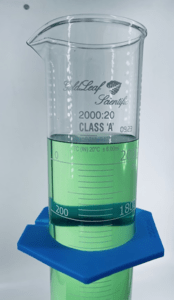
Graduated cylinders
Are devices used to measure volumes of liquids in a lab. The cylinder is open on one end with a base and graduation markings indicating volume. Graduated cylinders come in a range of sizes from 5mLs to 2,000mLs. The graduated cylinders from Goldleaf are made of 3.3 borosilicate glass to ensure quality and chemical compatibility across a variety of uses.
Click HERE to shop discounted Glass Cylinders
Graduated Cylinder Function
The function of a graduated cylinder is most often used for precision volume measurement of liquids but can also be used to measure the volume of gases. Although a specific device called a eudiometer is designed for measuring gases a graduated cylinder is similar enough to be used for both purposes.
Measuring liquids
To measure liquids start by pouring an approximate volume into the cylinder. The final precise volume is obtained by using a pipette to add or remove small volumes until the intended volume is reached. Graduated cylinders can be marked in single or double scales. Single scales show the volume of liquid contained from the bottom of the cylinder to the top of the liquid, but double scales also show the volume displaced or removed. Double scales are better for quick readings of displaced liquid for density measurements, or to dispense an exact amount from the cylinder.
Measuring Gases
A graduated cylinder can be used for measuring the volume of gases. First the cylinder is placed in a large dish or bowl filled with water. The air is removed from the cylinder by submerging and tilting slightly so the air bubbles out. Then the cylinder is inverted and pulled out of the water partially. The source of gas is connected to tubing and is placed under water in the opening of the cylinder. As the gas is produced it displaces the liquid. The difference in volume from the start to when the gas source is finished production reveals the amount of gas produced as a unit of volume. A mL is equal to a cubic centimeter
Is it better to use a beaker or a graduated cylinder?
A glass beaker is another common piece of lab glass that has a number of uses. Because beakers also have measuring lines on the side, some people may think a beaker can work for measuring as well as a graduated cylinder. However, a graduated cylinder is much better for taking precise measurement's as the measuring line is accurate within 0.5% margin of error, whereas a beaker is accurate within 10%. Making beakers much better for simple mixing or stirring. Our beakers are also heavy duty and are made of thick glass so is more resistance to breakage from accidents or mishandling.
What's the difference between "B" and "A" Class graduated cylinders?
Class B graduated cylinders are for general purpose measuring for less precise applications. While a Class A graduated cylinder is twice as accurate and even requires a certification with potentially a traceable serial number to verify the cylinders accuracy. The certification and traceable serial number means that your experiment are consistent and any deviations can be traced back to the exact graduated cylinder used. Volume measurements are an integral function of most processes and any unknown error that cannot be traced back can cost a lot of time and money. For these reasons having class A cylinders is a requirement for most application within industries such as pharmaceutical, R&D, engineering, and many more. Class B cylinder are cheaper in cost, but there is not significant savings over buying a class A cylinder. We at Goldleaf want our customer to have high quality laboratory products so we only sell Class A graduated cylinders. Our graduated cylinders also conform to ASTM E 1272 standards.
How to Choose a Graduated Cylinder
Choose your size - Graduated cylinders come in a variety of sizes for 5mL to 2L. When picking a size, make sure the amount of liquid you want to measure is approximately 40-80% of the total volume of the cylinder. Using a cylinder that is too large will make accurate measuring harder and when it is too small you may overfill past the graduation lines. It is also best to allow some extra volume for any future additions.
Select your material - Glass is usually ideal for serious chemical applications that require the use of chemicals and solvents. Polypropylene is a budget friendly option that will not break, but cannot be used with any hot liquids or volatile chemicals. Glass can be used for very hot or cold liquids and potentially harmful chemicals. Glass is chemically inert and can be used for nearly any chemical whereas plastics must be checked for chemical compatibility. Plastics also have the potential for leaching or for shedding microplastics. This makes them unsuitable for many biological research and processes.
Understand the measurement lines - The markings on a cylinder are referred to as the "graduations," and each graduation can mean a different measurement based on the capacity of your graduated cylinder. Major lines are typically longer with a number besides them. The major lines have an interval of 1 to 100 depending on the size of the cylinder. The minor lines are between the major lines and usually have 10 between the major lines. The measurements can be estimated between the lines but can only be one significant digit.
How to Read a Graduated Cylinder
Reading the Meniscus - There is an important method to reading a graduated cylinders measurements. First, you need to have the cylinder on a flat surface and view the line you are looking at exactly at eye level. Then look for the downward curve of the liquid inside the cylinder, this is called the Meniscus. Use the lowest point of the liquid as the point of your measurement, this will ensure you get a very accurate estimate of the liquid volumes in the cylinder.
Goldleaf Graduated Cylinders
Our products are known to provide quality to every application they are used in, and our Graduated Cylinders are no exception. Hexagonal base for stability and saving benchtop space, center spout for easy pouring that will deliver an accurate measurement every time with no need to worry. Measure each mL to the exact quantity you need for your experiment.
Click HERE to shop discounted Glass Cylinders


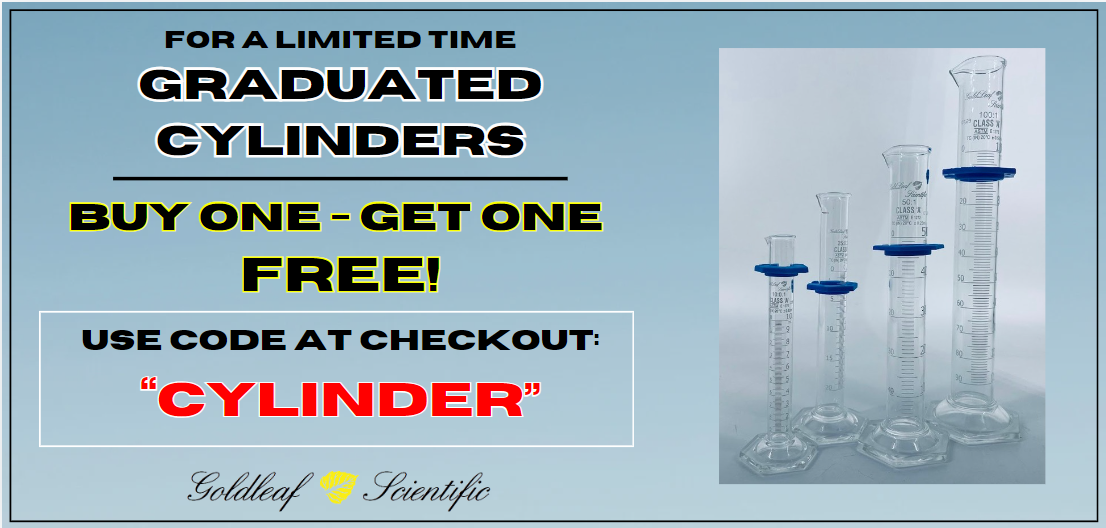
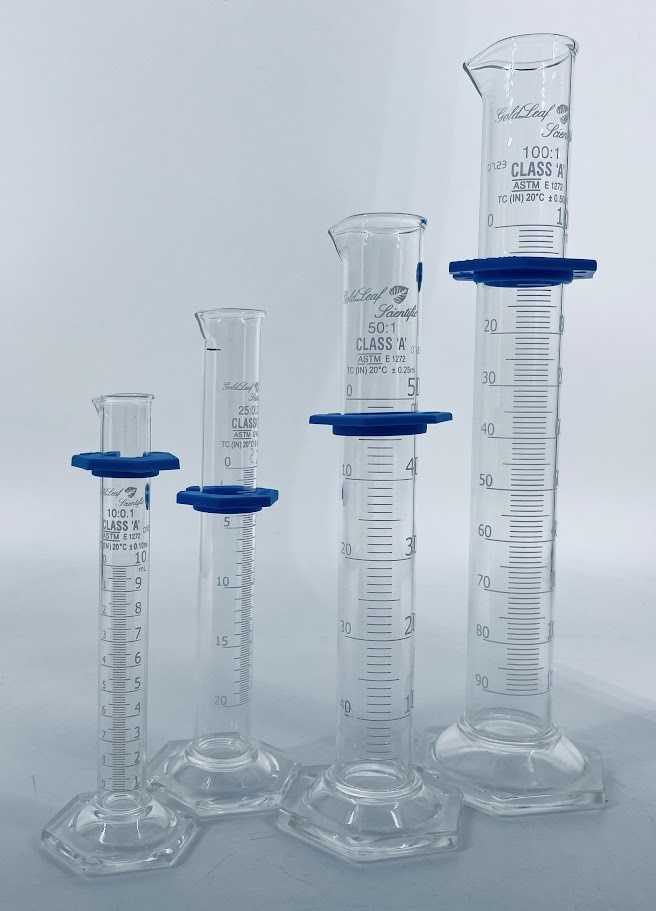
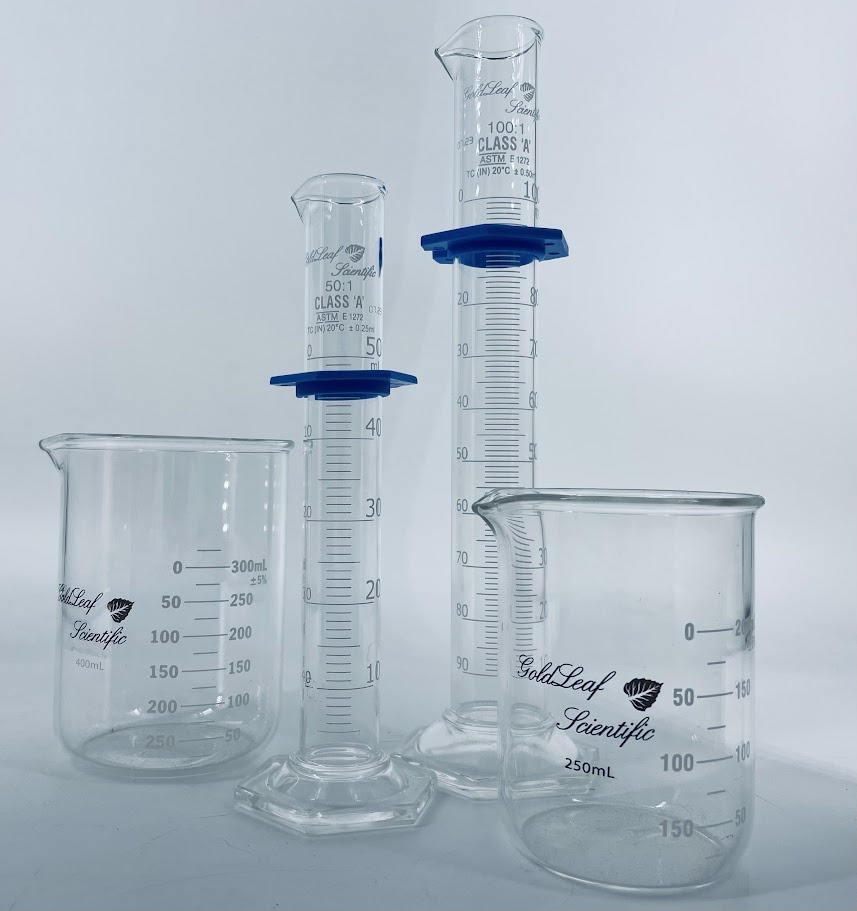
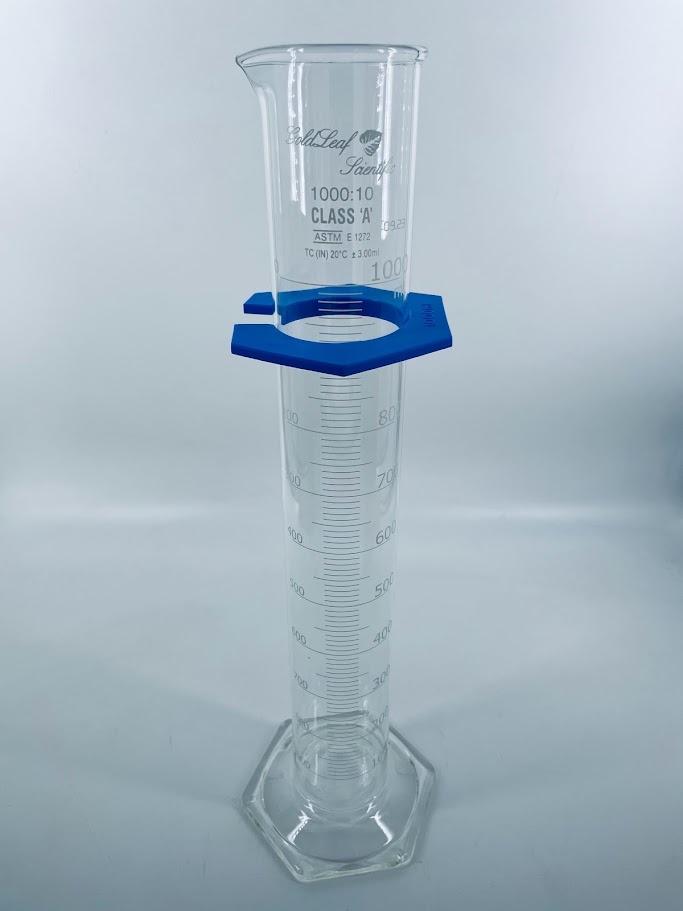

Comments
Be the first to comment...